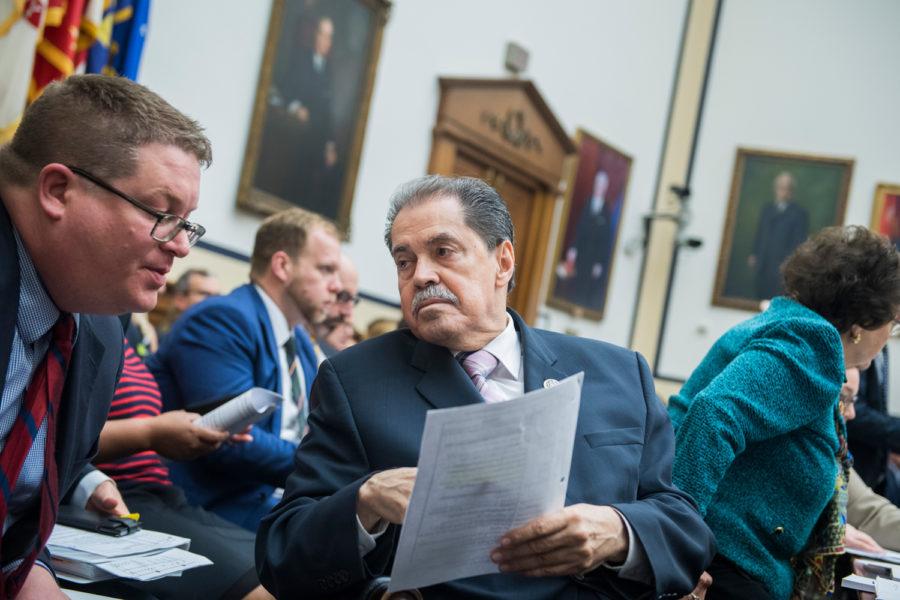Editorial: Pass the Stop HATE Act
Tom Williams/CQ Roll Call/Getty Images North America/TNS
Rep. Jose Serrano, D-N.Y., talks with an aide during a House Appropriations Committee mark up of the FY 2019 Commerce, Justice and Science Appropriations bill in Rayburn Building on May 17, 2018.
April 7, 2019
Acts of mass violence in the United States and abroad now seem to have a common link — they appear to start online.
The Tree of Life shooting in Pittsburgh, the Christchurch shooting in New Zealand and many others were allegedly committed by people who gained and spread hate via social media and other web platforms. To combat this rising trend, U.S. legislators are introducing the Stop Harmful and Abusive Telecommunications Expression (HATE) Act of 2019 to Congress to learn more about how people spread hate online, which is a good first step toward preventing further shootings.
The Stop HATE Act of 2019 was proposed by Sen. Bob Casey, D-Pa., and Rep. Jose Serrano, D-N.Y., along with a handful of Democratic presidential hopefuls including Sen. Kamala Harris of California, Sen. Amy Klobuchar of Minnesota, Sen. Cory Booker of New Jersey and Sen. Bernie Sanders of Vermont. It would require the U.S. Department of Commerce and the U.S. Department of Justice to write a report on how social media and other online platforms are tied to and causing hate crimes against individuals and groups of people. The report would recommend ways of combating these threats that are in line with the freedom of speech guaranteed by the First Amendment.
A previous report filed by the U.S. Department of Commerce’s National Telecommunications and Information Administration in 1993 examined how telecommunications of the time affected the rise in hate crimes. The report hasn’t been updated in 26 years, and given recent acts of violence worldwide and huge changes in the way we use the internet to communicate, it’s about time it was.
“The rapid development of media platforms and technology has outpaced our understanding of how they can be used to disseminate hate,” Casey said in a statement. “We need to examine how these platforms and technologies have been used to facilitate the commission of hate crimes so we can take appropriate steps to prevent another tragedy.”
According to the Hate Crime Statistics Act of 1990, hate crimes are “crimes that manifest evidence of prejudice based on race, gender or gender identity, religion, disability, sexual orientation, or ethnicity.” There has been an increase in reported hate crimes in recent years.
The FBI reported 7,175 incidents of hate crimes in 2017, which is a 17% increase from the 6,121 incidents reported in 2016. Two years prior, in 2015, they reported 5,479 incidents. While these numbers may be due to an atmosphere that has increased the likelihood of hate crimes being reported, increased access to extreme viewpoints may also play a part.
We saw it happen in New Zealand, when the shooter teased the attack on Twitter, announced it on an online message board 8chan and broadcast it live on Facebook. We saw it happen in Pittsburgh, when investigators found the shooter shared anti-Semitic messages on Gab, a social media website known for being extremist-friendly.
The Stop HATE ACT of 2019 is a necessary first step in combating hate crimes in the United States. It’s a way to hopefully have a bipartisan effort toward curbing domestic terrorism, and could provide a pathway that doesn’t involve the oft-heated conversations surround gun rights.
This bill offers a chance for our government to learn what it needs to do something about hate crimes, and members of Congress should give it their full support.








